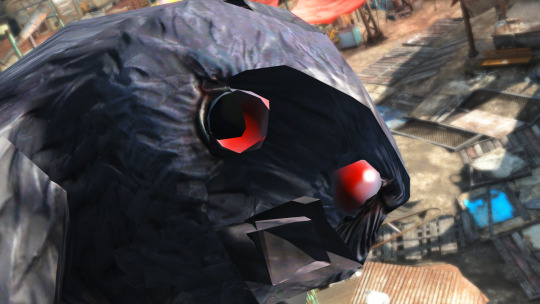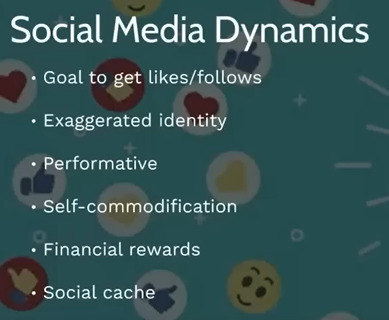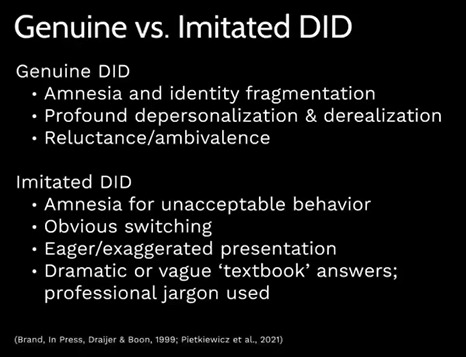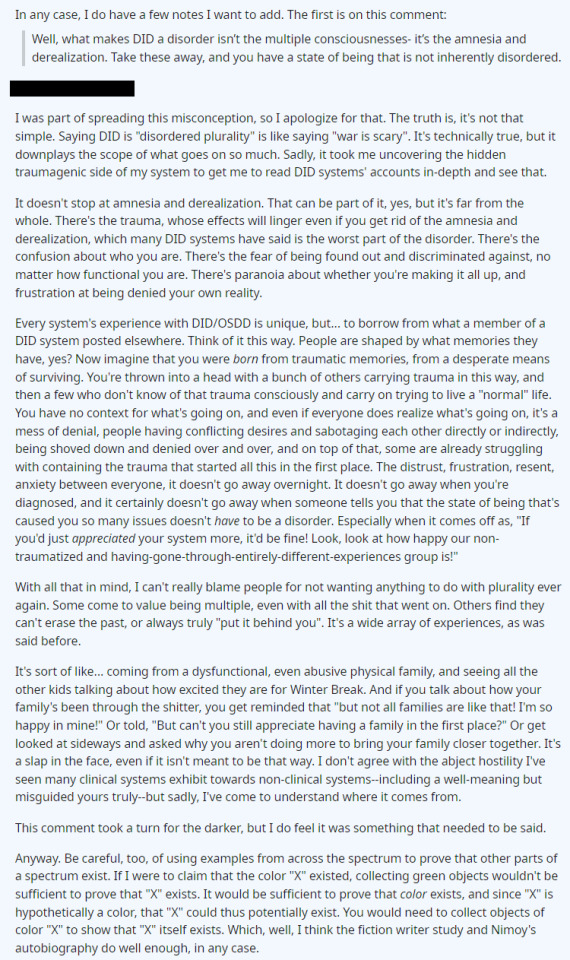#sunflower posts
Text
Things that can happen in DID/OSDD but people don’t talk about them as much:
An alter being co-conscious or influencing you without you knowing.
Being aware of a co-con alter but not knowing who they are.
Having difficulty telling apart your inner experiences. (Was that an alter or was I just feeling differently or was I just daydreaming?)
Having difficulty identifying your own emotions. (I feel “something”)
Knowing how to do something yet feeling like you don’t or shouldn’t know how to do it. (How do I know how to use this phone? I feel like it’s 1998 when I didn’t know what a phone was yet.)
Being in a familiar place/situation yet feeling confused, like it’s unfamiliar. (I’ve lived in this house for 7 years but I feel like this is my first time ever being in it.)
Being confused that your body is smaller/taller than you thought.
Feeling or being unable to do things that you normally can do at other times. (I just couldn’t drive the other day. I don’t know how. I just forgot how to do it.)
Things that happened a few days ago feel like months ago, or things that happened months ago feel like a few days ago.
Experiencing pain, headaches, visual impairment, or other physical symptoms that doctors can’t find a cause for.
Waking up as a different alter than the one who went to bed.
A co-conscious alter being able to influence or take control of certain body parts (like using the arms to hold & comfort you).
Being unable to tell if you’re dreaming or awake.
Feel free to add on!
#actuallydid#actuallyosdd#actuallydissociative#actuallytraumagenic#dissociative identity disorder#sunflower posts
2K notes
·
View notes
Text

Gods I love this man so much
169 notes
·
View notes
Text

from 1 year ago 🫶
148 notes
·
View notes
Text
Synth Crow:

Regular Crow:

The crows in game look like this:

and if you zoom in on their eyes, BEHIND the grey their eyes are red. So, despite both existing in the game's files. All crows are synth crows


All of them are like this, I checked :)
Not EVERY crow location has a monitor in the Institute, but that doesn't mean they aren't all synths still, just that they're not being broadcasted there at the time.
337 notes
·
View notes
Text
I watched Dr. Robinson's lecture on social media & self diagnosed DID (didn't watch the Q&A part though). It was a surprisingly decent lecture for the complex subject it's tackling! I took notes throughout the entire video if anyone is interested & doesn't want to watch the hour long video (but I recommend you do so you can form your own thoughts on it).
Here's a link to the video.
My notes are under the cut. If you want, you can read a short version here.
Important to keep in mind: Dr. Robinson says that the TikToks he shares in the lecture are for illustrative purposes. He knows nothing about the people behind them, and he cannot verify who does or does not have DID. Further in the video he says that harassing or fakeclaiming people who say they have DID, regardless if they actually have it, does extreme harm. Despite that, it still feels inappropriate that they used these TikToks without permission, and without censoring.
The introduction starts off with describing how the DID patients in their clinic look nothing like the sensationalized portrayal of DID in media. People with DID experience distress & confusion towards their symptoms, which they are reluctant or ashamed to report. Many of their patients report feeling distraught/confused by online content where people promote DID symptoms openly in a fun, sensationalized way. For illustrative purposes, Dr. Robinson shows a TikTok of a person asking their partner to guess which alter is fronting. It's a bunch of clips cut together of them going "guess who's fronting!" in a different voice and their partner gets it correct every time, like a little game.
He explains how recently, many people are coming into the clinic self-diagnosing as DID. They do not have a trauma history and their parts are character-like. The symptoms they present are not typical to DID.
He shows a TikTok of someone changing outfits to music, with the caption asking to guess which system member is wearing what. Robinson says that these overt changes in wardrobe are not characteristic of DID. Nearly all patients with DID are reluctant to discuss their symptoms and conceal it. So this begs these questions: Do online influencers genuinely have DID? If not, what are they experiencing? And what role does social media play in self-diagnosis & the perception of DID?
DID is considered the most severe/complex trauma-related dissociative disorder. It involves symptoms of:
Depersonalization
Derealization
Amnesia
Identity Confusion
Identity Alteration
At times, pwDID report experiencing someone in their mind who is "not me." At times, it feels like someone else is "driving" the body with a distinct set of thoughts & behaviors. Shifts are subtle or completely hidden. Dr. Robinson emphasizes that they rarely see obvious signs of switching or changes like what was depicted in the video earlier.
What's interesting to me is that he describes amnesia in DID as only being trauma-related… From what I understand, however, amnesia in DID can apply to everyday life as well.
He states that identity alteration (alters, switching) is the most sensationalized symptom of DID. Agreed. DID is not an alters disorder. "DID is really about the 'not me' experience." It is about wanting to get through everyday life without having to re-experience overwhelming trauma info.
He brings up media portrayals of DID like Split & the United States of Tara which have sensationalized the alters aspect of DID. This media has also perpetuated other myths such as the idea that pwDID are dangerous or extraordinary.
He talks about the development of DID. It's a posttraumatic disorder. Requires chronic, severe trauma during early development. In the absence of nurturing & soothing adults, the child internalizes aspects of their environment. The process of personality development is fragmented & those personality parts are anthropomorphized.
DID is really a disorder of hiddenness, he says. That's why it's surprising to see so many people online coming out and celebrating the diagnosis.
He uses a TikTok video of someone saying they got diagnosed with DID & that they're going to get a cake to celebrate. They literally ask the bakery person to write the phrase "happy DID diagnosis" on it. Omg I would not have the balls to do that… Tbh I don't vibe with thinking it's bad to feel happy/relieved about your diagnosis. I think more people should feel happy about it, because in the past it was so common to feel like a diagnosis was more like a death sentence. Robinson says that patients usually feel more fear after getting diagnosed, but that's not a good thing in my opinion.
The problem here shouldn't be that someone is happy/relieved they got an answer to their questions & a label for their pain. The problem here should be the sensationalization. It should be about how they boosted the entertainment value of it for profit.
He describes the history of DID being delegitimized. Freud decided it was false memories, then there was false memory syndrome. Etc. Etc. In the most recent decades, there has been so much more research & support for DID as a legitimate, trauma-based disorder. But many people still don't believe it and false memory controversy is still perpetuated. Robinson says that the recent trend of inaccurate social media representations is further delegitimizing DID.
At the heart of DID controversy there are two models for it:
Trauma model: DID is trauma-related and trauma memories are true
Fantasy model: DID is unrelated to trauma, resulted from fantasy-proneness or suggestibility, influenced by social media or other factors, and trauma memories are exaggerated or simply not true

He discusses the neuroscience behind it! Researchers are finding that DID has a unique biological imprint, further supporting its legitimacy as a real, trauma-based disorder.
Robinson says that people with DID have always been online & had online communities. Yet, specifically in facebook, youtube, instagram, TikTok, and twitter we see an issue. They are a bit different because (on the monthly) the active users are up in the billions. They are also algorithm-based, so liking content on DID will result in your feed giving you more DID content. The pandemic has also further driven people to social media, too.
TikTok DID hashtags get billions of views.. Robinson says these views have grown by 200-400 MILLION over the past 4 months.
PROS of discussing DID on the internet:
Evidence & info on DID is becoming widely & easily available. More resources for people. This has created safe spaces online for people who are trauma survivors, researchers, & clinicians. With so much good information, many of the false representations & misinfo can be countered. This means that many people can self-diagnose accurately! There's been a general destigmatization of DID online. The dominant narrative is no longer skeptical.
CONS of discussing DID on the internet:
There is also more inaccurate information. Most of the time the representation of DID is wrong. This leads to inaccurate self-diagnosing. People (especially young people) may attach clinical labels to normal experiences. They may elaborate or manifest DID-like symptoms instead of acknowledging they have a different problem. COVID has made people more vulnerable to this. There is also significant online harassment & fakeclaiming towards DID influencers.
FAKECLAIMING HARMS EVERYONE WITH AND WITHOUT DID. Robinson says that fearing you may be faking is one of the most common symptoms of DID. Regardless if someone genuinely has DID or not, calling them fake will harm both them and all other people with DID.
Now, I find it a bit questionable that they are using uncensored TikToks in this lecture despite acknowledging that these people face elevated fakeclaiming & harassment... I get that it's for educational purposes but it feels especially inappropriate when acknowledging this.

Social media has dynamics that reinforce these uncharacteristic DID representations. It rewards people who create attention-grabbing content for likes & follows, regardless if the content is true. That's why you can't know if someone is faking just because of their uncharacteristic portrayal, because it's possible that social media is influencing them to express themselves in different ways. But, it's also possible that these dynamics are still contributing to an increase of inaccurate self-diagnosis.
He brings up someone called the ace system (?) who has generated millions of views. I have NO IDEA how to describe the TikTok he just played. It was like…snippets of different system members talking about their day? They talked about panic attacks and stuff. They also switched so much in just one day. Seems exhausting.
Robinson does say "it's possible that some social media influencers like the ace system(?) may be malingering or have factitious disorders" which I personally don't see as him doubting that person in particular. He's not saying THIS PERSON IS MALINGERING, he's just saying some people might be malingering but we really wouldn't know as onlookers.
Describing what malingering & factitious disorders are now.
Malingering: intentional reporting of symptoms for some external gain like money
Factitious: intentional reporting of symptoms, but not just for som external gain
For illustration of external gain (which isn't inherently malingering), he's showing the ace system's (?) merchandise website. Then a cameo account where you can book a personalized video from the system. Another TikTok system he showed earlier makes a reappearance, this time to show that they are selling hats that their system made.

Imitative DID is for people who do not actually have DID but genuinely believe that they do. They may benefit from psychological or social gain, which makes social media platforms the ideal platform for them to thrive. Claiming they have DID might provide them a sense of connection/community. They may struggle with their identity such as who they are in the world, what community they belong in, who they'll be in the future, etc. Robinson says that "the DID narrative helps these people explain frequent confusion about who they really are."
Dr. Robinson says that endogenic systems (which he also just calls plurality/multiplicity) can sometimes be an example of Imitated DID. He mentions Astraeasweb from the 90s claiming nonpathological multiplicity/plurality as an identity. He plays a new TikTok of someone telling people to look up The Plural Association and "welcome to the plural community" and tips on how to start system communication.
He says that people with DID don't choose this or wish for this. The symptoms are developed out of need for survival.
Endogenic plurality refers to any development of plurality that does not have a trauma origin. They promote their plurality as a healthy way of their mind working; an identity. Some of them don't identify as having DID, but Dr. Robinson says that many do (I personally think it's the opposite but *shrugs* he might be lumping all cases of imitative DID in there).
He says that more research needs to be done to see if endogenics are genuine DID, imitated DID, or something else entirely.

Dramatized, obvious switching is actually very rare in DID. Yet, it's very common in online videos. He shows a TikTok of someone sitting in a car who is "switching." They stare into space, close their eyes slowly, drop their head down for a while, then they lift their head up and smile. He shows another TikTok of someone who also drops their head down (it says "no one in the body"?) and after a long time, they lift their head up, start swearing(????), and then cheekily take their name tag off while staring at the camera.
Robinson says that in both of these examples we see an uncharacteristic awareness of the process of dissociation, because these individuals could actually plan for and videotape what was going to happen. He says the switches in genuine DID are subtle and often unnoticed by outside observers.
In imitative DID there is also an emphasis on elaborated parts. They lack the confusion & distress/conflict with these parts which is characteristic of DID. He shows a TikTok of someone showing Picrews of their parts. Then he shows another TikTok with someone playing guess-who trying to figure out who is fronting. So literally playing a game. "A game-like way of presenting symptoms that would be very distressing in genuine DID," Robinson says about that video.
There was a recent case study that interviewed people who were not given the diagnosis of DID and found that they were angry + relying on the diagnosis for connection & attention.
Once again, he says it's difficult to distinguish whether social media influencers are genuine, malingered, imitative, or something else. It's not something even professionals can distinguish as onlookers. We don't know anything about the people in the video examples except for what they put out online.
To conclude the lecture, Dr. Robinson says that accurate online information & professional education is MORE IMPORTANT THAN EVER given the increase of DID awareness. Wrong info & poor representations delegitimizes DID and causes harm. We don't want it to undermine all of the progress in research in the recent years.
#syscourse#dissociative identity disorder#social media and the rise of self-diagnosed dissociative identity disorder#mclean hospital#long post#sunflower posts
78 notes
·
View notes
Text
A comment from 2016 about viewing CDDs as "disordered" versions of plurality. I found this comment pleasantly relatable and really nice as a DID system, myself. That's my personal experience, though. Any CDD systems want to share their own thoughts?
(I'm not going to post the link with respect to this person's privacy but, for transparency's sake, this comment was found within a tulpa community.)

(Image ID is under the read more!)
[ID: "In any case, I do have a few notes I want to add. The first is on this comment:
Well, what makes DID a disorder isn't the multiple consciousnesses- it's the amnesia and derealization. Take these away, and you have a state of being that is not inherently disordered.
[Censored user's name.]
I was part of spreading this misconception, so I apologize for that. The truth is, it's not that simple. Saying DID is 'disordered plurality' is like saying 'war is scary'. It's technically true, but it downplays the scope of what goes on so much. Sadly, it took me uncovering the hidden traumagenic side of my system to get me to read DID systems' accounts in-depth and see that.
It doesn't stop at amnesia and derealization. That can be part of it, yes, but it's far from the whole. There's the trauma, whose effects will linger even if you get rid of the amnesia and derealization, which many DID systems have said is the worst part of the disorder. There's the confusion about who you are. There's the fear of being found out and discriminated against, no matter how functional you are. There's paranoia about whether you're making it all up, and frustration at being denied your own reality.
Every system's experience with DID/OSDD is unique, but... to borrow from what a member of a DID system posted elsewhere. Think of it this way. People are shaped by what memories they have, yes? Now imagine that you were born from traumatic memories, from a desperate means of surviving. You're thrown into a head with a bunch of others carrying trauma in this way, and then a few who don't know of that trauma consciously and carry on trying to live a 'normal' life. You have no context for what's going on, and even if everyone does realize what's going on, it's a mess of denial, people having conflicting desires and sabotaging each other directly or indirectly, being shoved down and denied over and over, and on top of that, some are already struggling with containing the trauma that started all this in the first place. The distrust, frustration, resent, anxiety between everyone, it doesn't go away overnight. It doesn't go away when you're diagnosed, and it certainly doesn't go away when someone tells you that the state of being that's caused you so many issues doesn't have to be a disorder. Especially when it comes off as, 'If you'd just appreciated your system more, it'd be fine! Look, look at how happy our non-traumatized and having-gone-through-entirely-different-experiences group is!'
With all that in mind, I can't really blame people for not wanting anything to do with plurality ever again. Some come to value being multiple, even with all the shit that went on. Others find they can't erase the past, or always truly 'put it behind you'. It's a wide array of experiences, as was said before.
It's sort of like... coming from a dysfunctional, even abusive physical family, and seeing all the other kids talking about how excited they are for Winter Break. And if you talk about how your family's been through the shitter, you get reminded that 'but not all families are like that! I'm so happy in mine!' Or told, 'But can't you still appreciate having a family in the first place?' Or get looked at sideways and asked why you aren't doing more to bring your family closer together. It's a slap in the face, even if it isn't meant to be that way. I don't agree with the abject hostility I've seen many clinical systems exhibit towards non-clinical systems--including a well-meaning but misguided yours truly--but sadly, I've come to understand where it comes from.
This comment took a turn for the darker, but I do feel it was something that needed to be said.
Anyway. Be careful, too, of using examples from across the spectrum to prove that other parts of a spectrum exist. If I were to claim that the color 'X' existed, collecting green objects wouldn't be sufficient to prove that 'X' exists. It would be sufficient to prove that color exists, and since 'X' is hypothetically a color, that 'X' could thus potentially exist. You would need to collect objects of color 'X' to show that 'X' itself exists. Which, well, I think the fiction writer study and Nimoy's autobiography do well enough, in any case."
END ID]
38 notes
·
View notes
Text
Martin "Shaquille Sunflower" Payne
#poetic#poetry#journal#poems#poems and quotes#short poem#poem#dear diary#original poem#prose#sitcom#television#tv show#martin show#martin gina#shaquille o'neal#sunflower seeds#sunflower posts#petals#sunflower 🌻#personal#my art#90s#90s aesthetic#1990s#nineties#90s nostalgia
2 notes
·
View notes
Text
Sunflower seeds are a nutrient-dense food that provide a variety of health benefits, including:
Rich in Nutrients: Sunflower seeds are a good source of protein, healthy fats, fiber, vitamins, and minerals, including vitamin E, magnesium, and selenium.
May Lower Cholesterol: Sunflower seeds contain phytosterols, which have been shown to help lower cholesterol levels and reduce the risk of heart disease.
May Improve Heart Health: Sunflower seeds are rich in vitamin E and healthy fats, which may help to improve heart health by reducing inflammation and preventing blood clots.
May Help Regulate Blood Sugar: Sunflower seeds are a good source of fiber and protein, which can help to regulate blood sugar levels and reduce the risk of type 2 diabetes.
May Boost Immunity: Sunflower seeds are a good source of antioxidants, which can help to boost the immune system and reduce the risk of certain diseases.
May Improve Skin Health: Sunflower seeds are rich in vitamin E and other antioxidants, which can help to protect the skin from damage caused by UV rays and free radicals.
May Aid in Weight Loss: Sunflower seeds are a good source of fiber and protein, which can help to reduce appetite and promote weight loss.
Overall, sunflower seeds are a nutritious and versatile food that can provide a range of health benefits and help to support overall health and wellness.
2 notes
·
View notes
Text

🌻
#sunflower soul#sunflower#sunflower aesthetic#sunflower posts#always face the sun#happy vibes#good vibes#vibe high
4 notes
·
View notes
Text




#photographers on tumblr#photography#flowers#original photographers#flower#nature#natureperfection#naturephotooftheday#photo#quotes#aestheitcs#myedits#flowerphotography#sunflower#sunflowers#sunflower posts#aesthetics#grungy aesthetic
2 notes
·
View notes
Text
If you were hurt by another child in your childhood, I want you to know that you aren’t alone.
If you experienced COCSA (child on child sexual abuse), I’m here for you. If you were bullied by other children, I support you. If another child committed any sort of violence or abuse onto you, I believe you. If it was a family member, a friend, or someone who you trusted a lot, I hear you. If it was complete stranger or someone you didn’t trust at all, I see you.
I understand how incredibly complicated and agonizing it can feel to know you were traumatized by another child, while you were a child. Especially if you hurt them back or were coerced by adults to hurt each other. That shit’s incredibly tough.
But you are not alone. I believe you. Know that recovery is possible and you’re on your way, even if it doesn’t feel like you are. I promise.
#sunflower posts#trauma recovery#actuallytraumatized#actuallydid#actuallytraumagenic#recovery#positivity#trauma support#abuse tw#csa tw
620 notes
·
View notes
Text

Can i say how much I absolutely adore the shapes of Hollow Knight characters???
They're so... Round... N soft../pos
Like they're genuinely SO shapey and fun to draw I ADORE all of them
(also tried making up an Isma design - if you're confused about who is with White Defender haha!)
(Ogrim is a bit badly proportioned but shhhh no he isn't)
#isma hollow knight#white defender#hollow knight#cloth hollow knight#ogrim#godseeker hollow knight#pale king#ghost of hallownest#Pure Vessel#hornet hollow knight#sunflower posts
791 notes
·
View notes
Text

My favorite songs :D I was going to play more but I was too lazy haha ✨
And of all these songs I identify with Tombi and Sunflower 😔👍
1 note
·
View note
Text
Can we plleeeaaaseeee talk about Nick hanging out with this gen 2 synth.. ... Look how happy he is and they're drinking sodas ....... WITH VICTOR

impeccable......
#and thats obviously not dima which makes this SOOOOOO much funnier to me#i love this so much#sunflower posts#thank you for this Bethesda..... im not sure who actually created the art for them though#nick valentine
807 notes
·
View notes
Text
Some clinical lingo that I think needs to be explained.
Etiology of disorder = What causes someone to develop it, usually involves a combination of many different factors (culture, environment, genetics, etc.)
Onset of disorder = When the full presentation of the disorder first becomes noticeable (meaning ALL of the symptoms required for diagnosis, not just one or two)
Onset of symptom = When just this symptom first become noticeable (not the full disorder)
This is why you'll see people saying disorders with a trauma-based etiology can onset at any point in life. It doesn't need to happen directly after the traumatic event, even though that's common. Someone might not develop full-fledged PTSD or DID until years after the trauma that caused it.
56 notes
·
View notes
Text
How neat! I found this archive of an online essay written in 1997 by two partner systems. It's about communicating with persecutor & protector alters in DID/OSDD. Check it out by clicking here.
My therapist taught me a lot of these tips while I learned to work with my system. It's cool to see that the online community has been sharing tips like these for so long. Do you guys find the essay helpful? If not, what helps you work with the persecutor & protector alters in your system?
(Disclaimer: This is an archiving blog that posts about events that took place in the past. Sources on this blog do not always reflect up-to-date info on dissociative disorders or plurality.)
30 notes
·
View notes